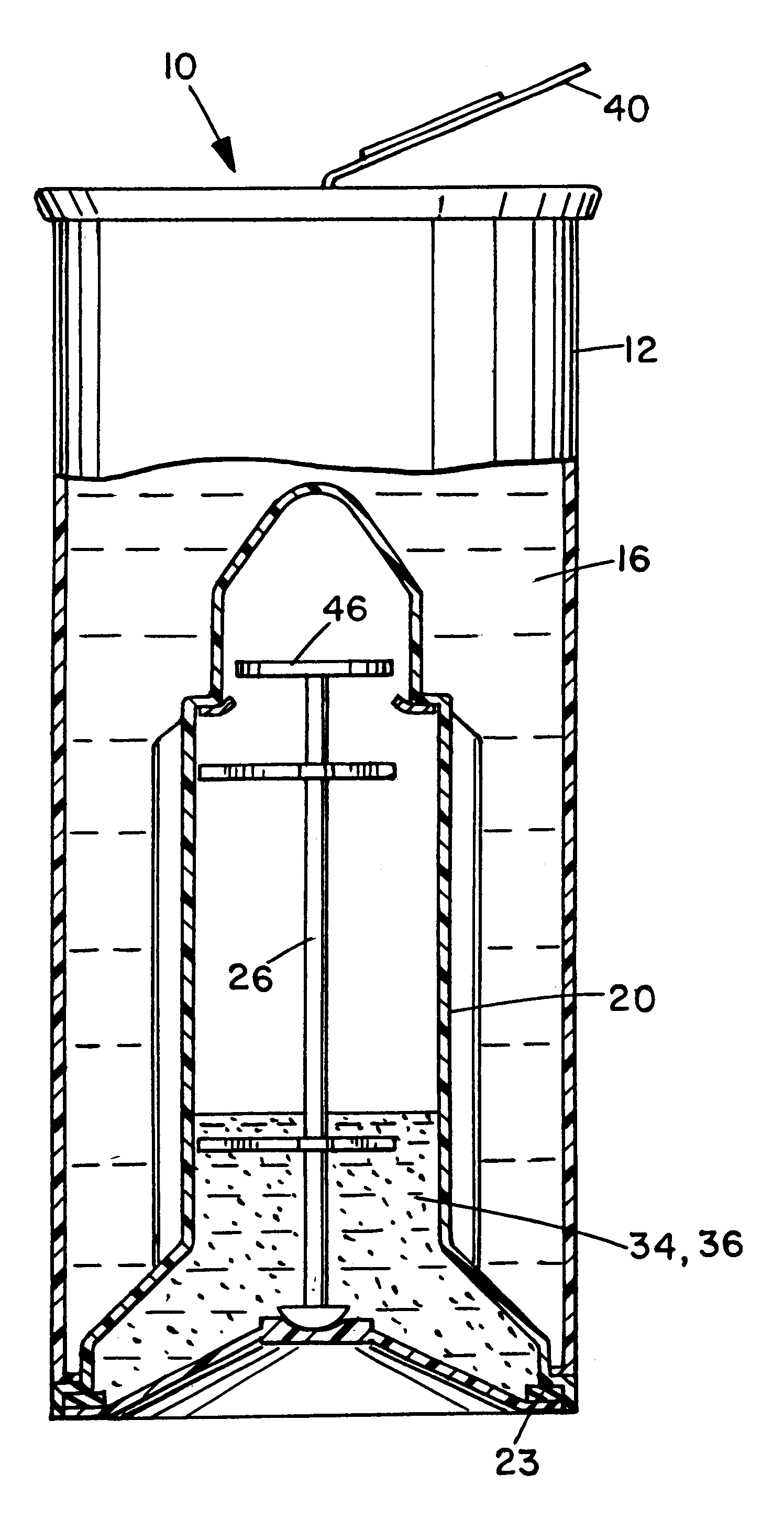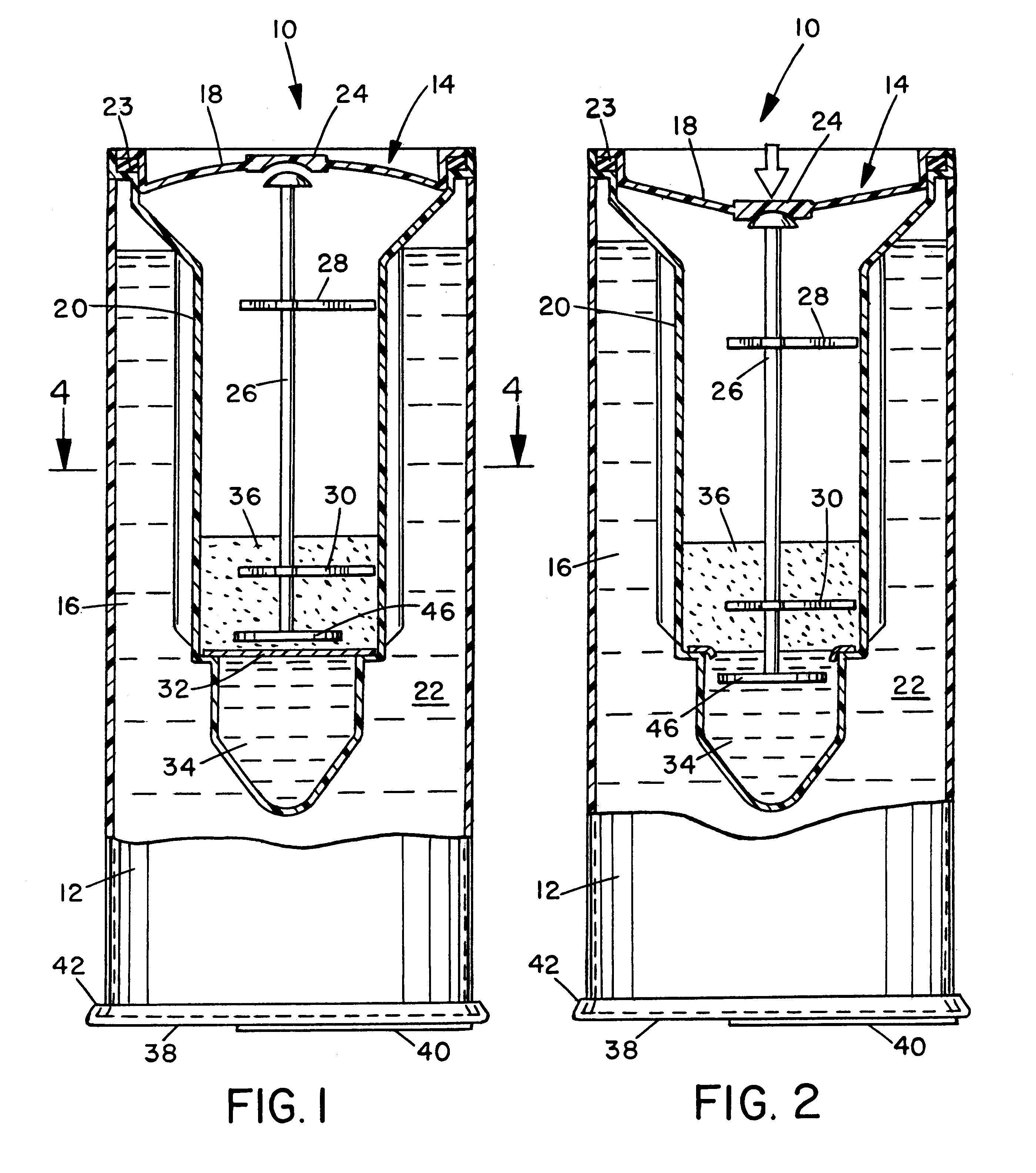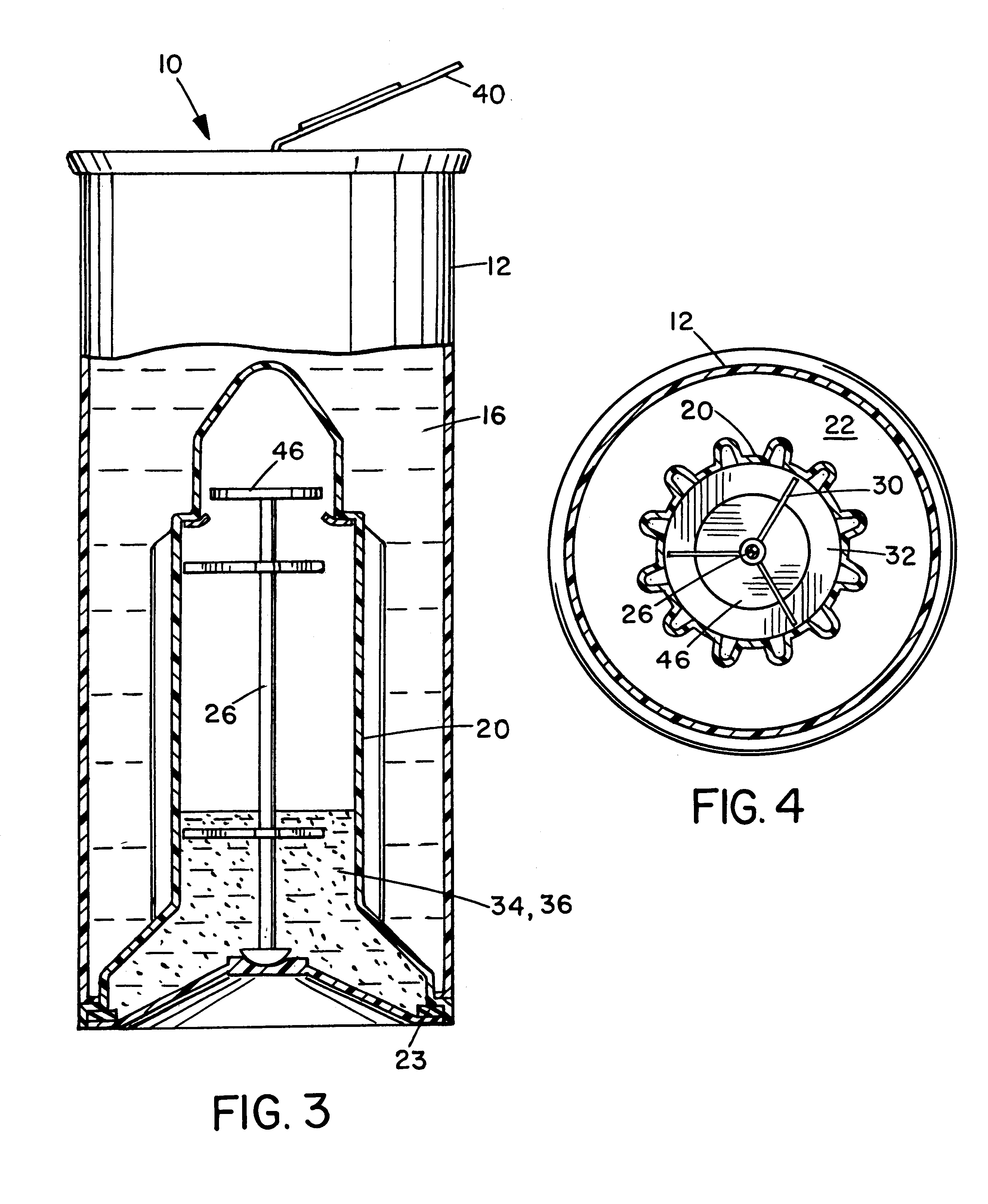Container with self-heating module having liquid reactant and breakable reactant barrier at distal end of module
a self-heating module and container technology, applied in the field of containers, can solve the problems of difficulty in judging the time period specified in the container instructions, and the contents of the container are consumed
- Summary
- Abstract
- Description
- Claims
- Application Information
AI Technical Summary
Benefits of technology
Problems solved by technology
Method used
Image
Examples
Embodiment Construction
A container 10 includes a container body 12 and a thermic module 14 that transfers heat between it and the contents 16 of container 10. Although any of a variety of manufacturing methods and materials may be suitable, container body 12 is preferably made of blow-molded food-grade plastic. Thermic module 14 includes a thermic module cap 18 and a thermic module body 20. Module body 20 is joined to container body 12 by a suitable plastic welding process. Nevertheless, in other embodiments module body 20 may alternatively be formed unitarily with container body 12 as portions of a unitary molded body. The elongated portion of module body 20 that functions as a heat-exchanger is preferably fluted or pleated to promote heat transfer. (See FIG. 4.) Contents 16, which may be a beverage, food, medicine or any other suitable material, are contained in a material chamber 22.
Module cap 18 is press-fit in the proximal end of module body 20. A gasket or filter ring 23 is disposed between the adjo...
PUM
| Property | Measurement | Unit |
|---|---|---|
| time | aaaaa | aaaaa |
| time period | aaaaa | aaaaa |
| temperature | aaaaa | aaaaa |
Abstract
Description
Claims
Application Information
 Login to View More
Login to View More - R&D
- Intellectual Property
- Life Sciences
- Materials
- Tech Scout
- Unparalleled Data Quality
- Higher Quality Content
- 60% Fewer Hallucinations
Browse by: Latest US Patents, China's latest patents, Technical Efficacy Thesaurus, Application Domain, Technology Topic, Popular Technical Reports.
© 2025 PatSnap. All rights reserved.Legal|Privacy policy|Modern Slavery Act Transparency Statement|Sitemap|About US| Contact US: help@patsnap.com



